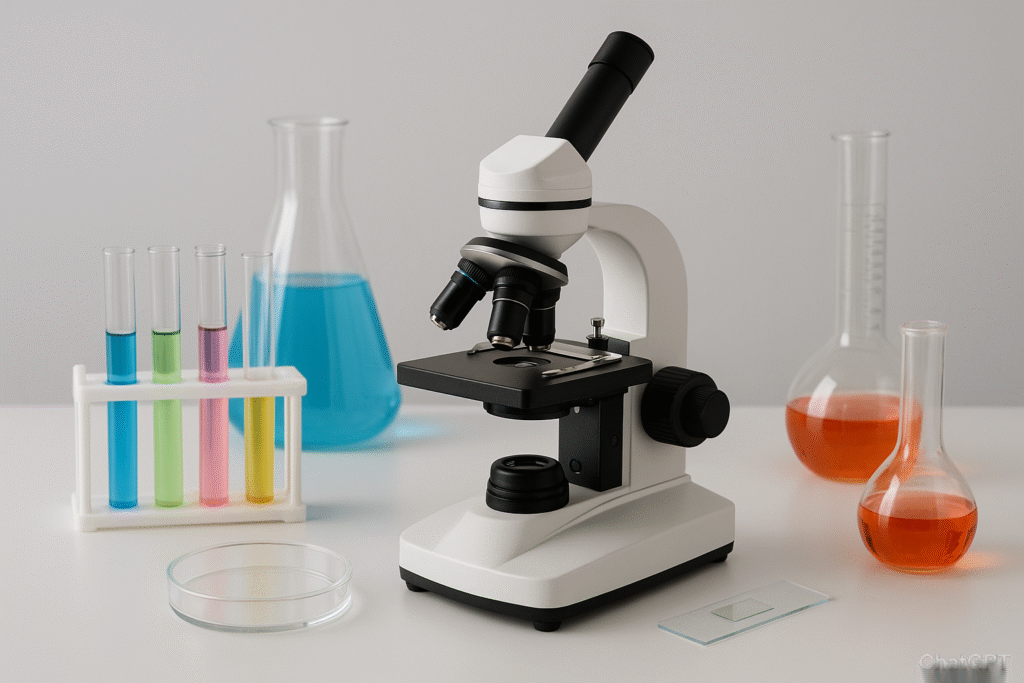Scientific equipment forms the foundation of research and experimentation across various fields, from biology and chemistry to physics and engineering. It includes essential tools such as microscopes, centrifuges, pipettes, and analytical instruments, all designed to enable precise and reliable data collection. High-quality scientific equipment is crucial for producing accurate results and advancing scientific knowledge.
Laboratories rely on a diverse range of instruments and supplies to support their specific research needs. This equipment often combines innovation and durability, helping researchers improve efficiency and maintain safety standards. Whether it’s for educational purposes or cutting-edge research, having the right tools can significantly impact the success of any scientific project.
The demand for reliable lab equipment continues to grow, driven by evolving technologies and expanding research applications. Suppliers offer a broad spectrum of products, from basic consumables to advanced analytical devices, ensuring that scientists have access to the tools required to meet their objectives.
Types of Scientific Equipment
Scientific equipment varies widely depending on the functions it serves. It includes tools designed for precise measurement, chemical analysis, sample handling, and detailed observation. These tools are essential for conducting experiments, gathering data, and ensuring reliable results in laboratory settings.
Analytical Instruments
Analytical instruments are used to identify substances and measure their composition. This category includes spectrometers, chromatographs, and pH meters. Spectrometers analyze the interaction of light with matter, revealing chemical structures or concentrations.
Chromatographs separate mixtures into individual components, often used in chemical and biological testing. pH meters monitor acidity or alkalinity with high accuracy.
These instruments are crucial in quantitative analysis, enabling researchers to detect trace elements and chemical properties. Accuracy and ease of calibration are key features for reliable data collection.
Laboratory Glassware
Laboratory glassware comprises various containers and tools primarily made of glass or borosilicate. Common items include beakers, flasks, pipettes, and test tubes.
Beakers and flasks hold, mix, and heat liquids. Pipettes allow precise measurement and transfer of fluids. Test tubes are used for small-scale reactions and sample storage.
Glassware durability and chemical resistance make it ideal for handling corrosive substances and high-temperature experiments. Proper selection depends on volume capacity and the nature of the chemicals used.
Measuring Devices
Measuring devices provide accurate numerical data essential to scientific investigations. Examples are balances, thermometers, and calipers.
Balances measure mass with precision, including analytical balances for microgram-level accuracy. Thermometers measure temperature changes in reactions or environments. Calipers determine dimensions of physical samples, crucial in materials science.
Consistency, calibration, and sensitivity define effectiveness in these devices. They help maintain standards across experiments and ensure comparability of results.
Imaging Equipment
Imaging equipment captures detailed visual information at different scales. Common instruments include microscopes, cameras, and spectrophotometers.
Microscopes magnify structures invisible to the naked eye, aiding cellular and molecular research. Cameras document visual data or changes over time. Spectrophotometers can also generate images based on light absorption at various wavelengths.
These tools improve observation accuracy and allow detailed analysis of experimental subjects, enhancing understanding of complex scientific phenomena.
Applications of Scientific Equipment
Scientific equipment plays a critical role across multiple fields by enabling precise measurement, observation, and experimentation. It supports advancements in health, environmental sciences, and materials development through tailored tools and technologies.
Biomedical Research
In biomedical research, scientific equipment is essential for studying biological processes and developing medical treatments. Instruments like centrifuges, microscopes, and spectrophotometers facilitate cell analysis, protein measurement, and genetic testing.
Advanced devices such as PCR machines amplify DNA sequences, aiding in disease diagnosis and genetic research. Imaging tools, including electron microscopes and flow cytometers, provide detailed views of tissues and cells, enhancing understanding of pathological conditions.
Laboratory equipment enables controlled experiments and accurate data collection, which are crucial for developing vaccines, drugs, and diagnostic techniques. It also supports personalized medicine by helping identify biomarkers and testing drug responses.
Environmental Monitoring
Environmental monitoring relies on scientific instruments to assess air, water, and soil quality. Sensors and analyzers detect pollutants and trace elements, offering real-time data crucial for regulatory compliance and ecological studies.
Equipment such as gas chromatographs and mass spectrometers analyze chemical compositions in samples, identifying contaminants and their sources. Remote sensing devices and automated samplers allow continuous monitoring in various ecosystems.
These tools help track the impact of human activities, climate change, and natural processes on the environment. They support decision-making in conservation, pollution control, and resource management by providing reliable and replicable measurements.
Materials Science
In materials science, equipment is fundamental for characterizing and testing material properties at micro and macro scales. Instruments like tensile testers and hardness meters evaluate mechanical strength and durability.
Microscopy techniques, including scanning electron microscopy (SEM) and atomic force microscopy (AFM), reveal surface structures and composition at the nanoscale. Spectroscopy tools analyze chemical bonds and elemental makeup.
This equipment enables the development of new materials with specific properties for applications in electronics, aerospace, and manufacturing. By providing detailed data, it assists researchers in improving material performance and reliability.
